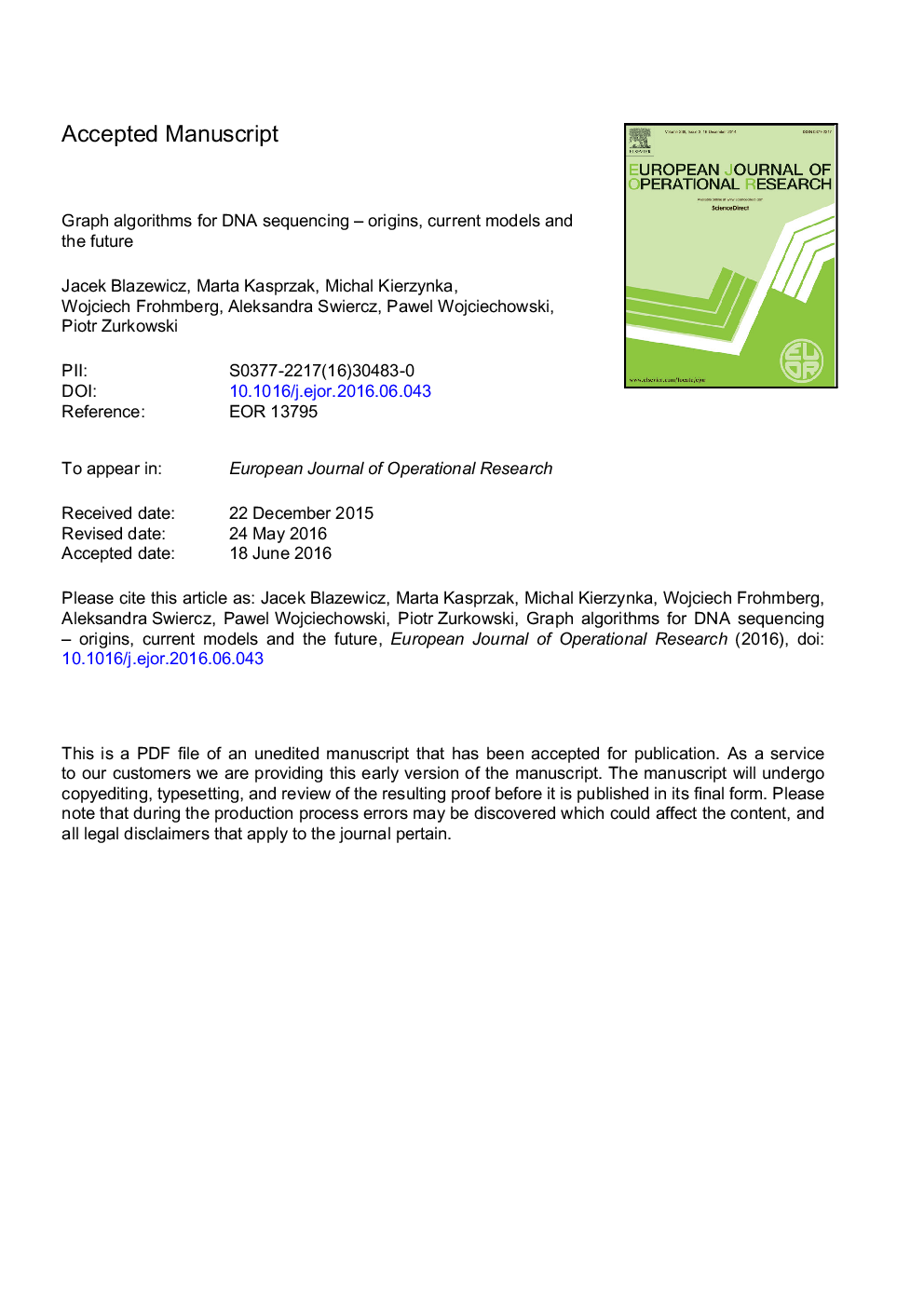| Article ID | Journal | Published Year | Pages | File Type |
|---|---|---|---|---|
| 4959302 | European Journal of Operational Research | 2018 | 42 Pages |
Abstract
With the ubiquitous presence of next-generation sequencing in modern biological, genetic, pharmaceutical and medical research, not everyone pays attention to the underlying computational methods. Even fewer researchers know what were the origins of the current models for DNA assembly. We present original graph models used in DNA sequencing by hybridization, discuss their properties and connections between them. We also explain how these graph models evolved to adapt to the characteristics of next-generation sequencing. Moreover, we present a practical comparison of state-of-the-art DNA de novo assembly tools representing these transformed models, i.e. overlap and decomposition-based graphs. Even though the competition is tough, some assemblers perform better and certainly large differences may be observed in hardware resources utilization. Finally, we outline the most important trends in the sequencing field, and try to predict their impact on the computational models in the future.
Related Topics
Physical Sciences and Engineering
Computer Science
Computer Science (General)
Authors
Jacek Blazewicz, Marta Kasprzak, Michal Kierzynka, Wojciech Frohmberg, Aleksandra Swiercz, Pawel Wojciechowski, Piotr Zurkowski,
